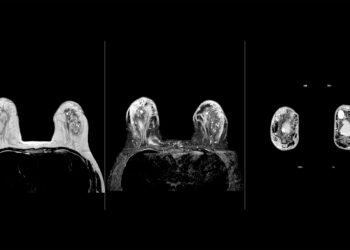An eye drop formulation intended to slow progression of myopia in children has been recommended for a marketing authorization by the European Medicines Agency (EMA).
Ryjunea, developed by Santen Oy, was submitted under a hybrid application. This process allows partial reliance on preclinical tests and clinical trials of an already-authorized reference product. The reference product, Atropin-POS, has been authorized in the European Union since 2005.
Lower Strength, New Indication
Ryjunea contains the same active substance as Atropin-POS — atropine sulfate — but is available at a lower strength and for a different indication.
Atropine is an anticholinergic agent that blocks muscarinic receptors. Although its precise mechanism in myopia control remains unclear, researchers have suggested it may involve scleral remodeling and strengthening, resulting in reduced eye elongation and vitreous chamber depth.
The EMA’s Committee for Medicinal Products for Human Use said that a phase 3 study in children aged 3-14 years demonstrated that Ryjunea significantly slowed the mean annual progression of myopia compared with a vehicle control.
Treatment may be initiated in children aged 3-14 years with an annual progression rate of at least 0.5 diopter (D) and a severity of -0.5 D to -6.0 D.
The drug should only be prescribed by ophthalmologists or qualified eye care specialists, the EMA stipulated.
Availability and Side Effects
Ryjunea will be available as a 0.1 mg/mL eye drop solution.
The most common side effects include photophobia, eye irritation, and blurred vision.
Once the European Commission grants final marketing authorization, detailed prescribing information will be published on the EMA website.
Peter Russell has been a journalist for 40 years covering international news, health, medicine, and national politics on radio, TV, and online. He is based in the UK.
Source link : https://www.medscape.com/viewarticle/ema-recommends-ryjunea-pediatric-myopia-2025a10007ja?src=rss
Author :
Publish date : 2025-03-28 16:10:00
Copyright for syndicated content belongs to the linked Source.














